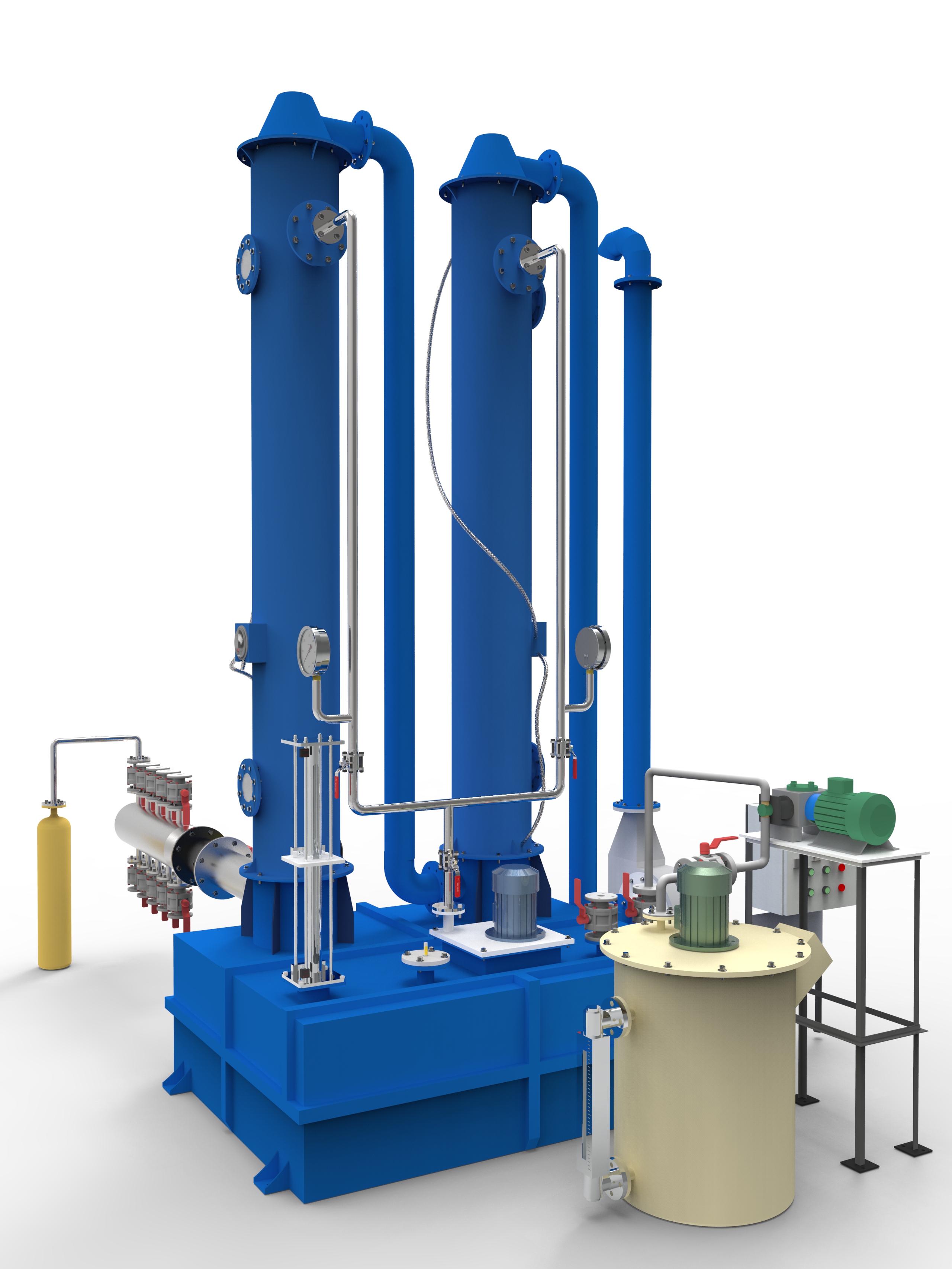- Continuous pH monitoring system for scrubbing liquid
- Dosing system for adjusting pH
- PLC operated control panel
- SCADA system
Hydrogen Sulfide Scrubber
Hydrogen sulfide gas causes a wide range of health effects. Workers are primarily exposed to hydrogen sulfide by breathing it. The effects depend on how much hydrogen sulfide you breathe and for how long. Exposure to very high concentrations can quickly lead to death.
Caustic scrubbing is a technology has been used for the removal of H2S from exhaust gases in different industries for many years.
Improvements in design and control strategies, favorable prices for caustic compared with other non-regenerable H2S scavenging chemicals, and the potential for sales value for the NaHS (sodium bisulfide) product have made caustic scrubbing an economic and viable option for some refinery streams
The scrubbing of hydrogen sulfide (H2S) using sodium hydroxide (NaOH) solution is established technology, and has been applied in a variety of industries.
The removal of small amounts of H2S from gas streams is typically referred to as scavenging. Caustic is often classified as an H2S scavenger, and competes with other scavengers such as solid reactive adsorbents.
Scavengers are most often used for the removal of H2S in amounts of roughly 0.1 ton per day, or less. However, the product of caustic scrubbing of hydrogen sulfide at moderate pH - NaHS which is also referred to as NaSH - when produced at high quality can often be sold, and depending on the value of the product solution.


OSHA PELs:
· General Industry Ceiling Limit: 20 ppm
· General Industry Peak Limit: 50 ppm (up to 10 minutes if no other exposure during shift)
· Construction 8-hour Limit: 10 ppm
· Shipyard 8-hour limit: 10 ppm
IDLH:immediately dangerous to life and health (level that interferes with the ability to escape) (NIOSH)
PEL:permissible exposure limit (enforceable) (OSHA)
ppm:parts per million
REL:recommended exposure limit (NIOSH)
In the scrubbing process, sodium hydroxide reacts with H2S dissolved in aqueous solution to form sodium bisulfide (NaHS) and sodium sulfide (Na2S).
H2S + NaOH → NaHS + H2O (1)The extent of reactions 1 and 2 are dependent upon the amount of NaOH that is available relative to the amount of H2S that is scrubbed into the solution.
When greater amounts of NaOH are present relative to the sulfide that is present, the solution pH is higher, and continuation from reaction 1 to reaction 2 is favored.
NaHS is a valuable product than Na2S; in order to maintain product quality, it is required to control the pH of the spent caustic solution so that NaHS is the predominant sulfide species.
Na2S uses twice the amount of caustic necessary for H2S removal and it has a limited solubility in water as well.
There are many different possible designs for caustic scrubbers. In selecting a configuration for a caustic scrubber for H2S removal, the following are some of the factors that should be considered:
